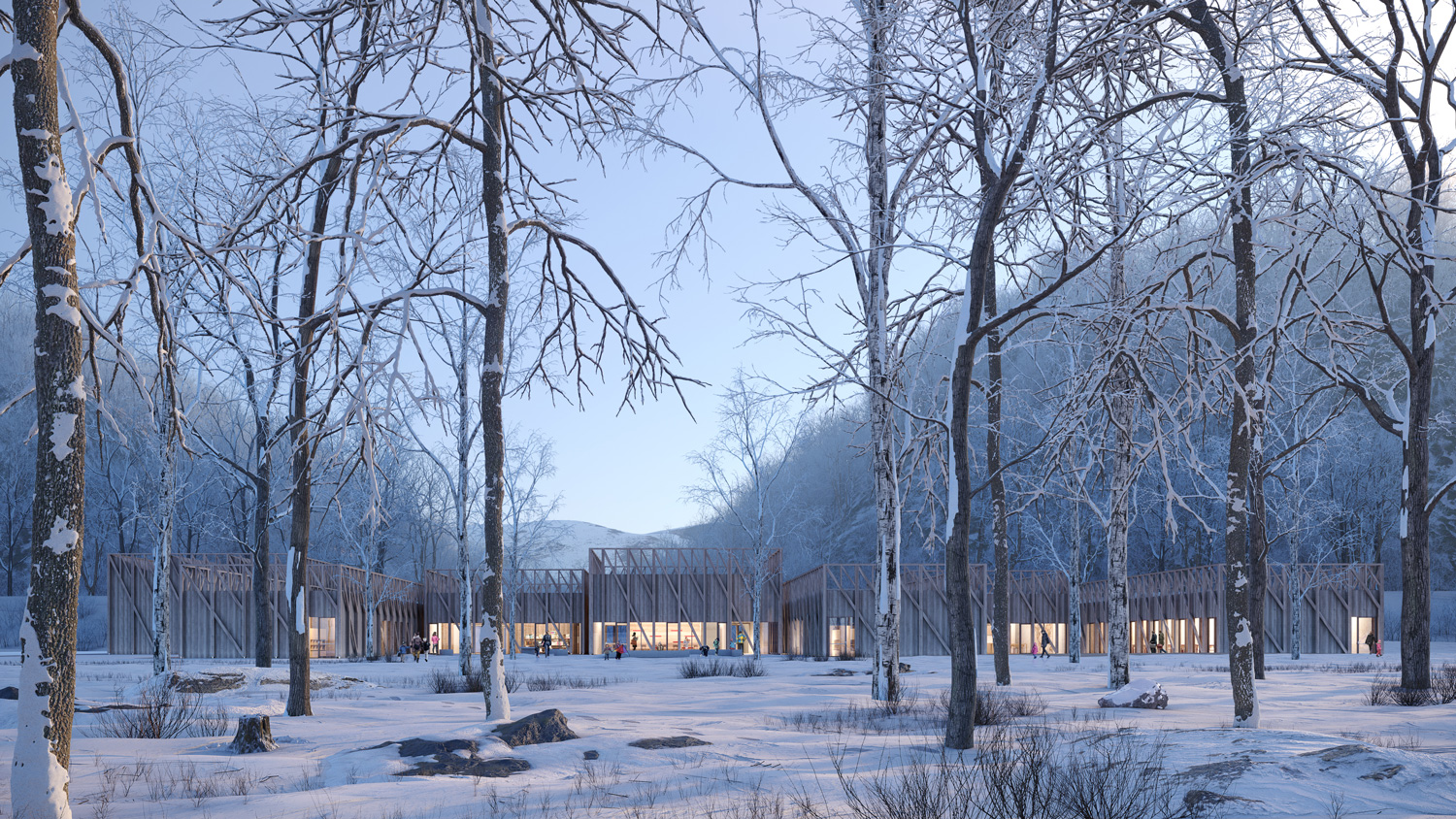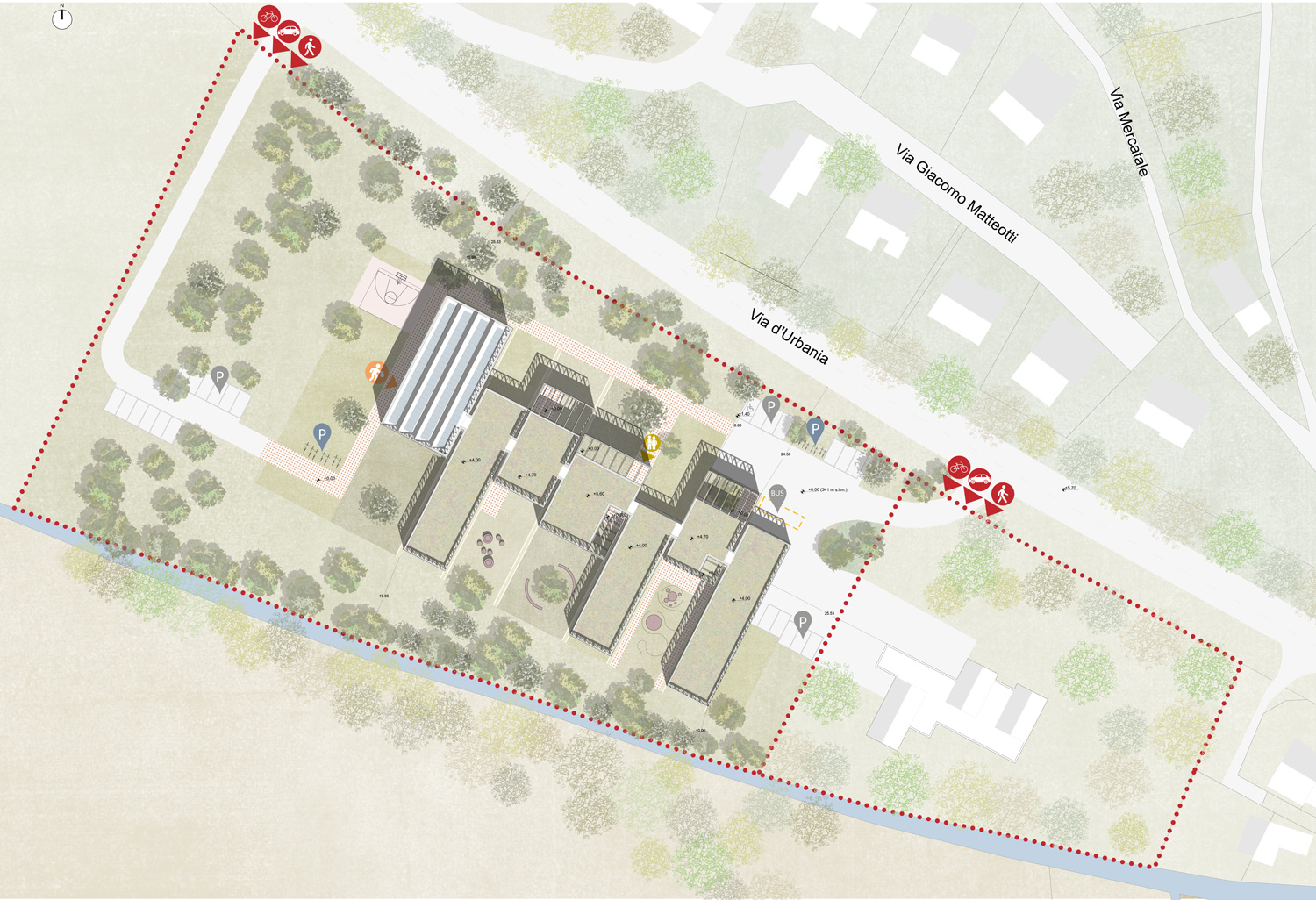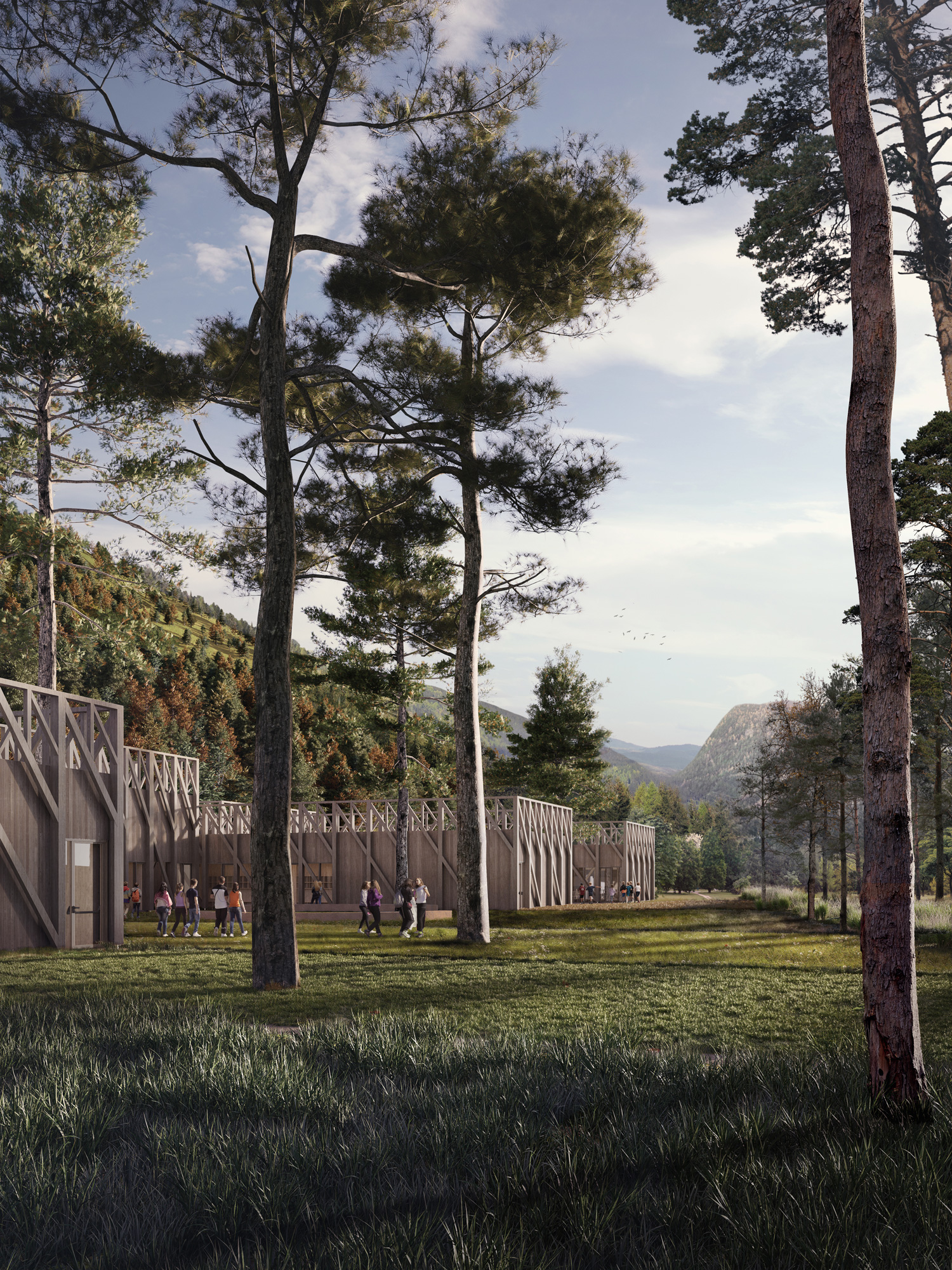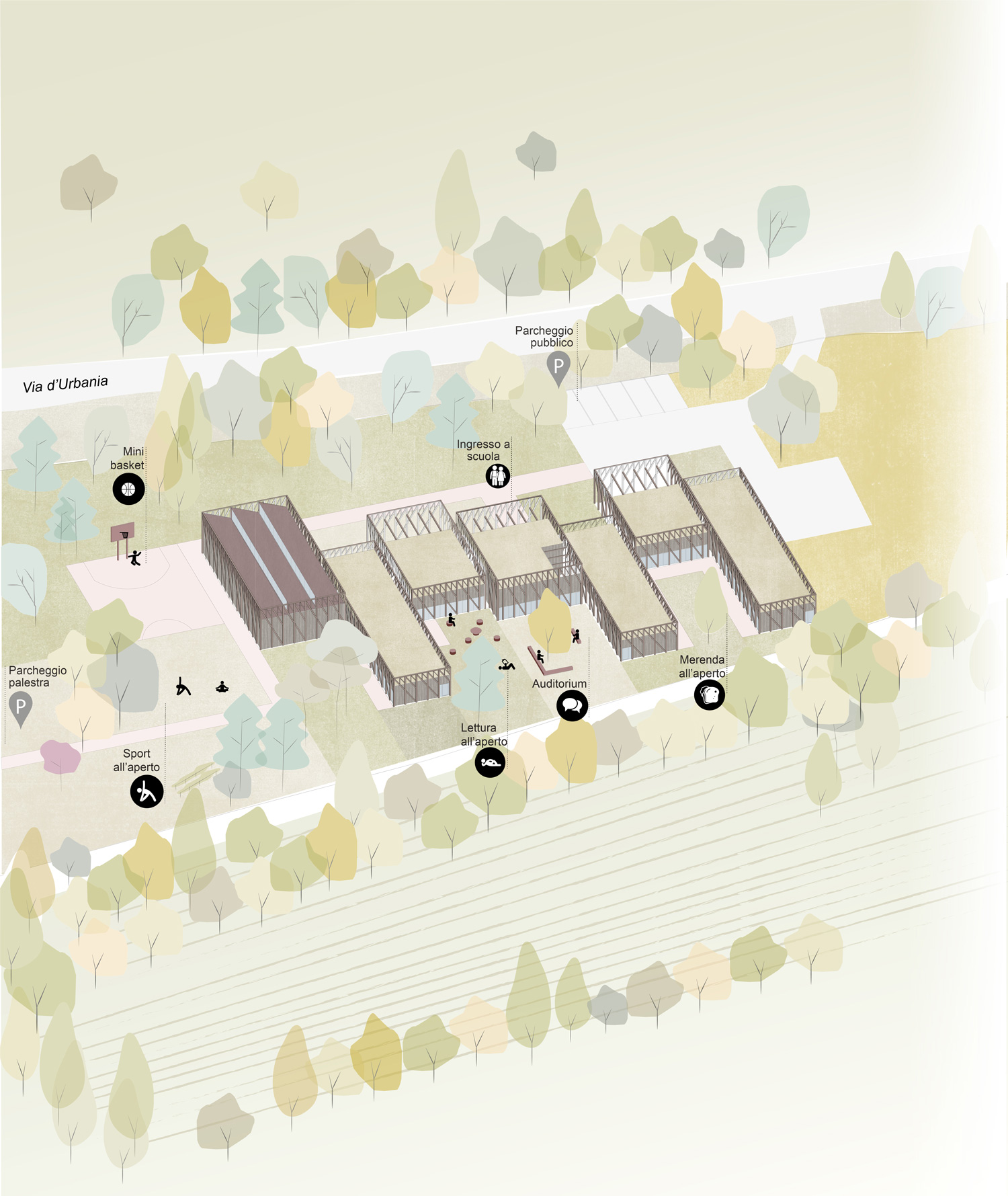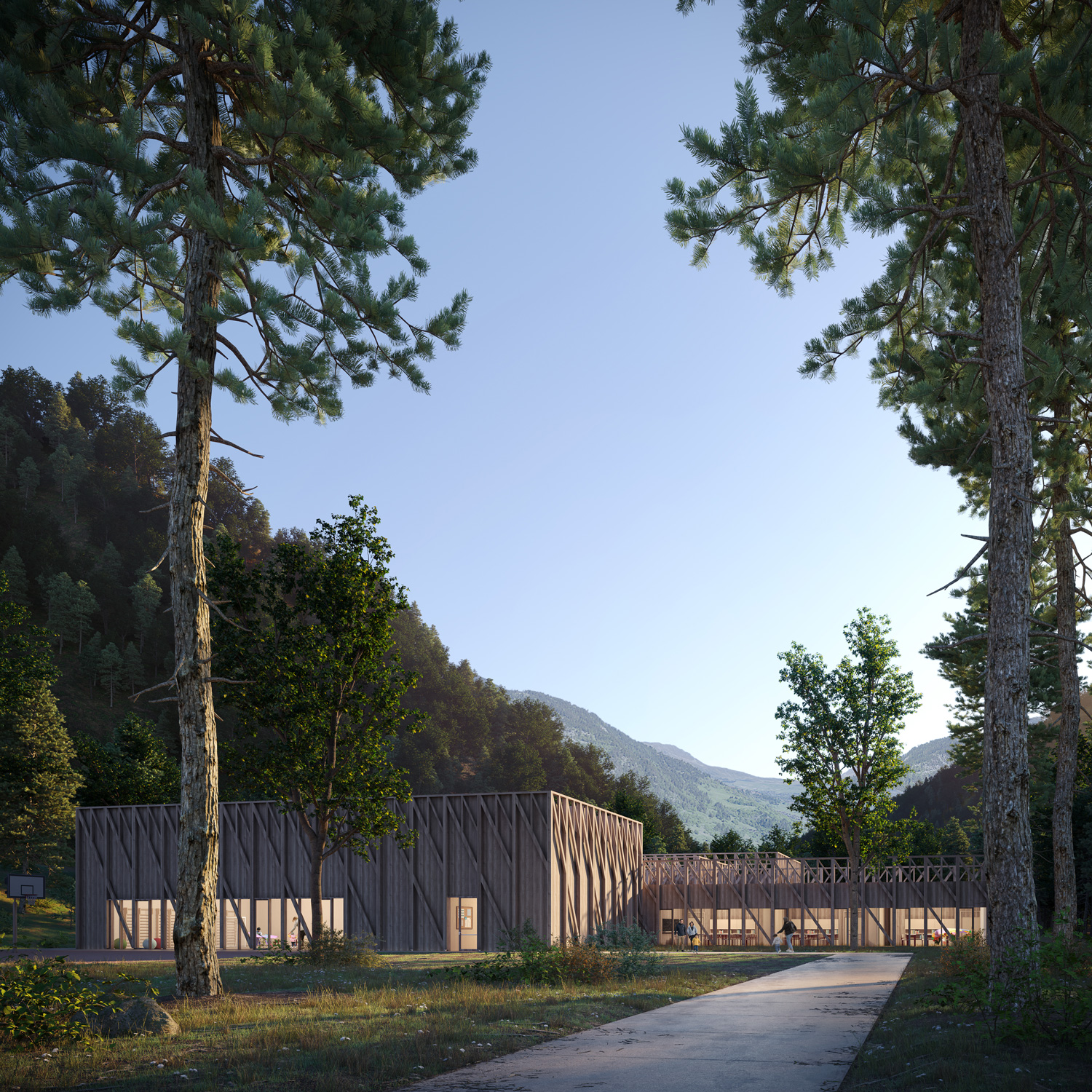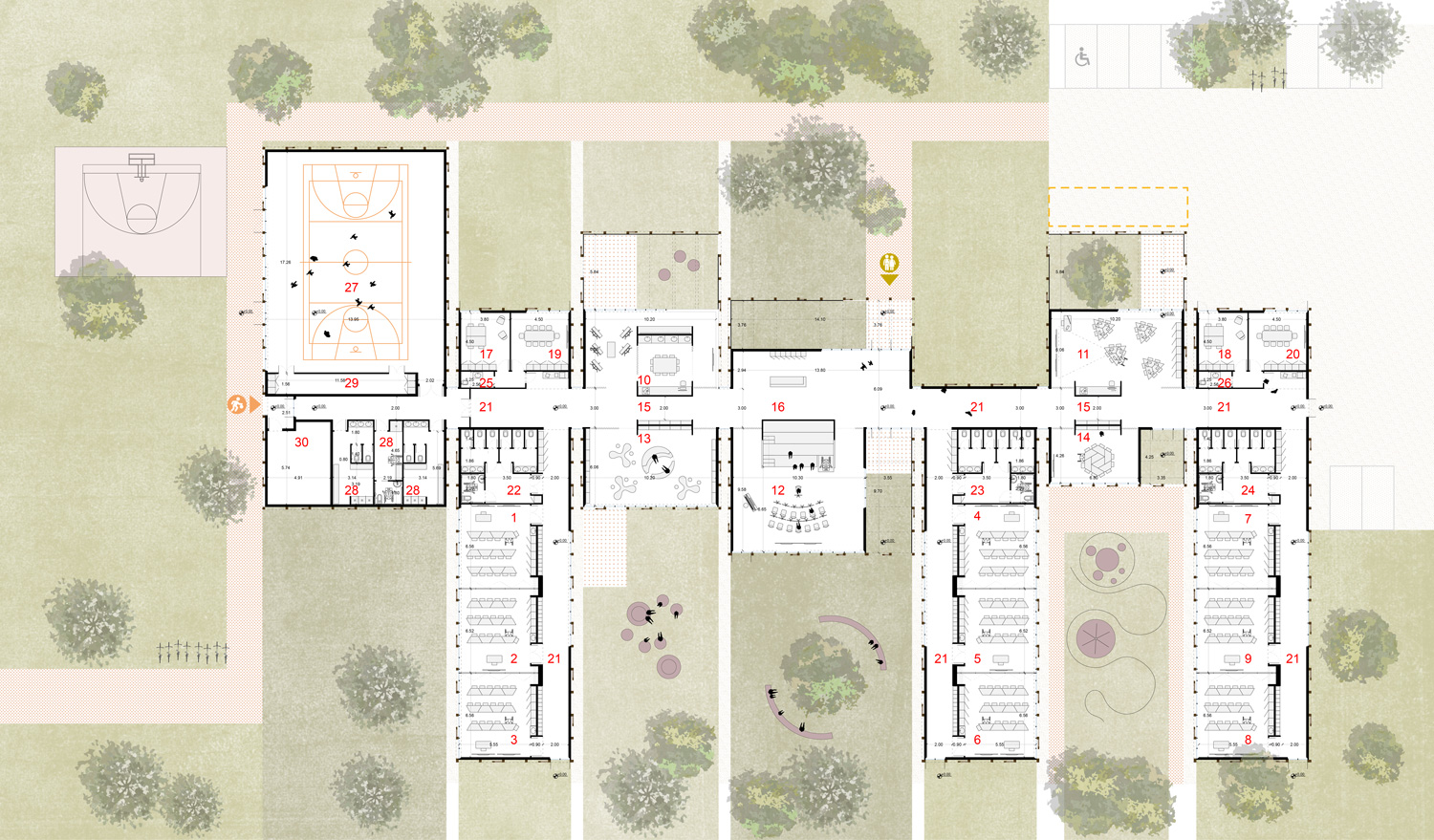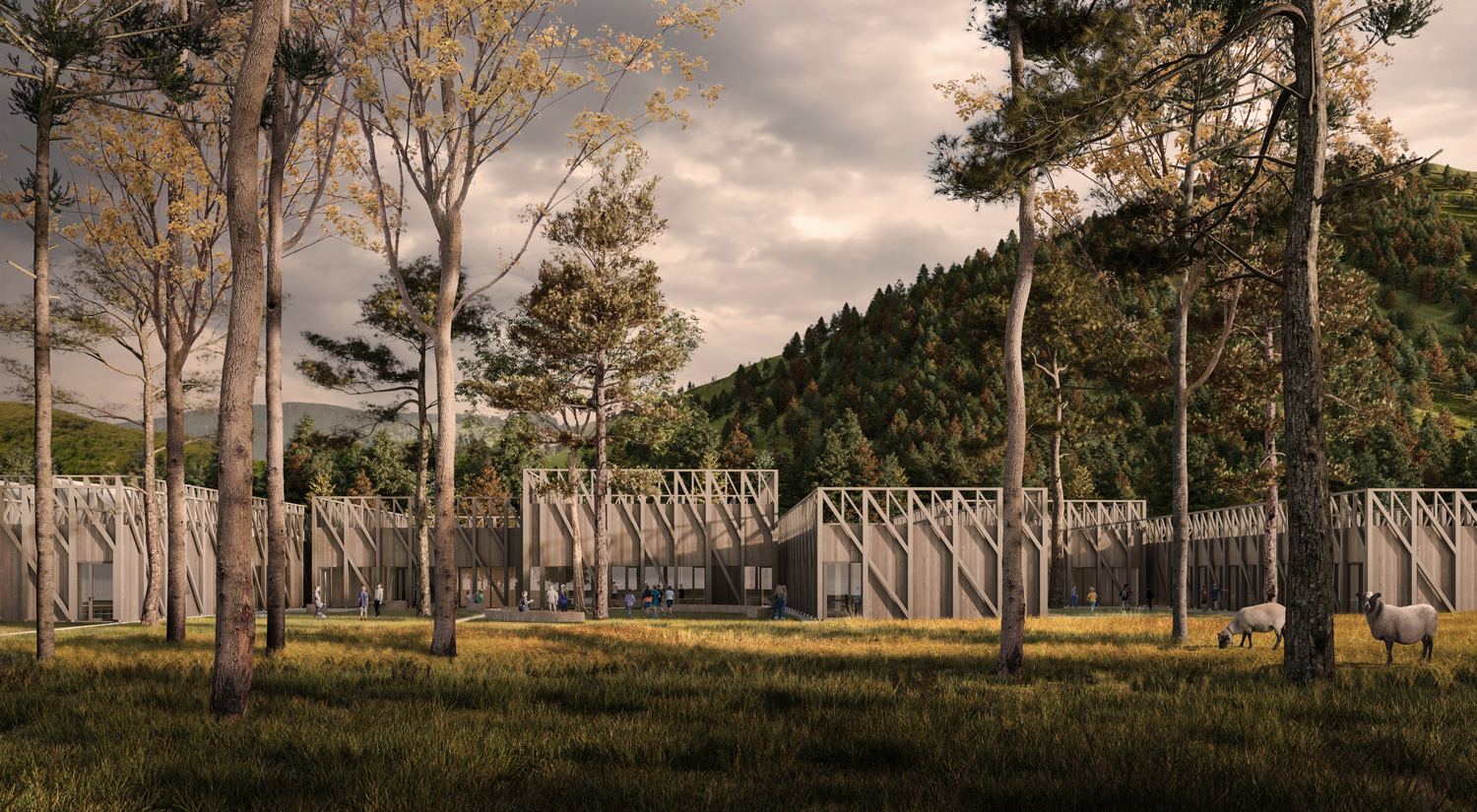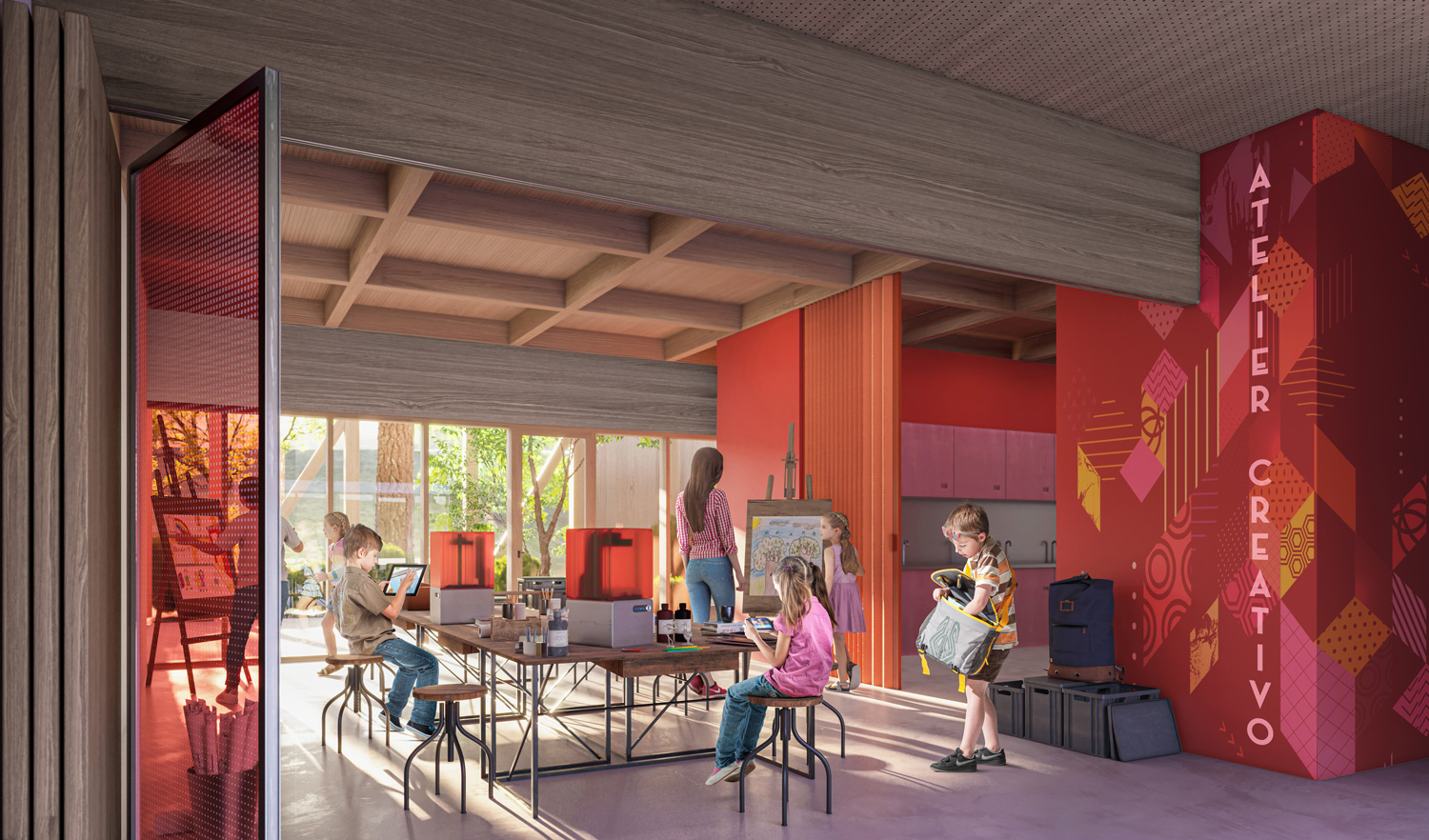☉ Piobbico School Complex is a thrid prize competition entry by Dunamis Architettura for Municipality of Piobbico in 2022. It is located in Piobbico Italy in an urban setting. Its scale is medium with a surface of 1.735 sqm a budget of 3.300.000 € and a ratio of 1.902 €/sqm. Key material is wood. Level Creative Studio and Mograph Studio collaborated as visualizers.
The project site is just outside the historic centre of Piobbico (PU), Italy, beyond the Candigliano river; it ryns along “via d’Urbania”, in a developing area of the city. Towards the valley the land opens onto the nearby countryside and is surrounded by rich vegetation. The project proposes a measured intervention, which interacts with the landscape through simple geometries linked to the context, with attention to proportions and the use of materials imprinted in the memory and culture of the place.
The architectural system presents a dynamic conformation of simple and easily identifiable volumes, composed to guarantee a constant relationship of continuity between inside and outside, between educational spaces, between collected patios and courtyards open to the natural landscape. The choice of green roofs made up of local essences for all flat volumes allows an effective insertion of the school building into the landscape.
Concept
The building develops on a single level, is composed of seven volumes of different sizes, placed side by side longitudinally and separated from each other by deep incisions; these blocks allow the building, with transversal movements, to follow the shapes of the clearings, following the natural context and bringing the school environments closer to the surrounding vegetation. The blocks containing the classrooms push south towards the canal, while the volume of the gymnasium flows in the opposite direction.
The movement in plan corresponds to the variation in height of the fronts, which formally highlights the various functions and, furthermore, evokes the morphology of the surrounding landscape. The presence of the school is less massive and the dialogue with nature becomes more evident; the use of wood characterizes the entire building, starting from the exposed external structure, up to the external cladding and the fixed furnishings and finishes that characterize the interiors.
The nature is an integral part of the entire daily teaching experience. All rooms have direct contact with the outside through large opening windows. From the classrooms, as well as from the laboratories and common spaces, it will be possible to perceive and experience the surrounding nature and extend the teaching activities outdoors, immersed in the vegetation or protected in special more intimate spaces, incorporated into the volumes and protected by pergolas covered by curtains. The atrium, in continuity with the auditorium, can expand externally for lessons and shows, as well as laboratories and the library.
The gym, located in the northern end of the complex, is easily accessible even outside school hours thanks to the second vehicle access, the dedicated parking and direct pedestrian access. A shed roof characterizes the volume; it ensures the lighting of the internal playing field through the windows facing north and the support for the photovoltaic system.
Spaces
The building houses a primary and a lower secondary section, with teaching spaces sized to accommodate 18 students each. The spaces reserved for teaching and the community respect the most current standards in terms of relationships, flexibility and multifunctionality, as well as in terms of openness towards the outside. The classrooms are designed for dynamic configurations: movable walls allow the unification of two or more classrooms, in order to host inter-cycle activities.
Equipped walls with seats and coat hangers on the outside and lockers and a water point reserved for students on the inside, separate classrooms from the connective space. The longitudinal connection expands in several points towards the areas intended for special and integrative activities, enhancing the environments themselves in terms of functionality and facilitating students’ orientation in the building.
